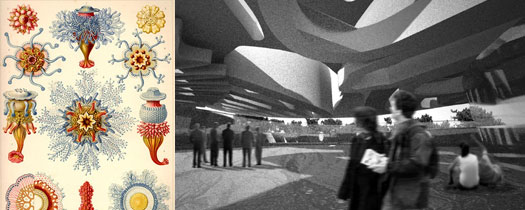
Mediterranean Sea
Latitude: 39.35 N
Longitude: 2.39 E
Palma de Mallorca
Mallorca
Balearic Archipelago
The new Centre of Interpretation in Palma’s old town and its link to the open public space of El Baluarte del Príncipe and the Porta d’es Camp Square rise up from the sea shore, just as they were conceived.
The Centre of Interpretation seeks to be part of the shore and thus takes reference from purity and innocence barely 120 metres away – from the delight of a few children crouching down, fascinated as they observe how the waves cross the sand around shells they have carefully placed in the wet ground after satisfying their eager desire to collect surprisingly similar, yet surprisingly different mysterious objects.
The stretch of land is furrowed by a hollow which crosses Gabriel Alomar Vilallonga Avenue diagonally to reach Baluarte del Príncipe. The hollow thus forms a very natural link between these two elements in such a way that the link becomes a new area of activity between the three centres being developed. It is accessed from the sea front via a gentle ramp, thus avoiding a strenuous climb of 2m. On the city side of the hollow, partially covered and on the exterior, are the Visitors’ Welcome Centre and the Centre of Interpretation. Here use is made of the difference in height between the sea front and Joan Maragall street to offer a large reception area and a direct link via escalators and lifts to Joan Maragall street, from where the centre can also be entered directly from the city itself. This side also houses the Palma Observatory Headquarters, an independent institution, but directly related to the two other centres.
On the sea side of the hollow is the Centre for Enterprises and Commercial Innovation, which includes its two more open spaces on the lower level and its more compartmentalised ones above street level along the sea front. However, the top only just reaches the height of Joan Maragall street, meaning it boasts sea views from the upper level of the premises.
The lower level offers a large parking area for cars and buses, which is directly linked by stairs and lifts to the foyers in the different centres.
The fascination of the children, some inhabitants of the old city, some visitors who stroll through the upper streets of the city, others travellers who fly over the city, or users who look to the sky through shells with the same fascination, all see how an amalgamation of mysterious pieces sketched by Haeckel, similar, yet all different, cover a dynamic, interconnected, harmonised space which lets the light from the Mediterranean filter through between its ribs.
